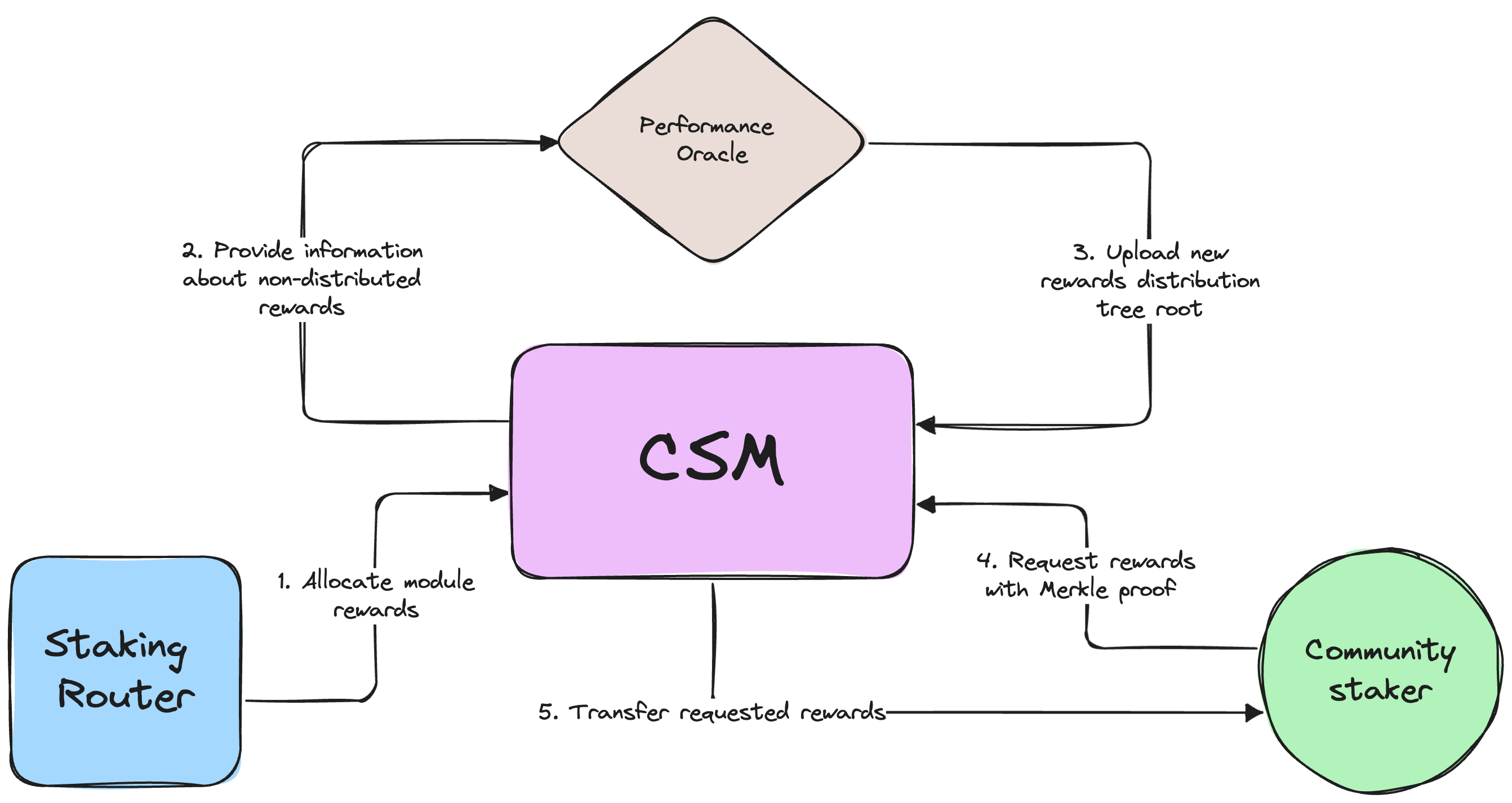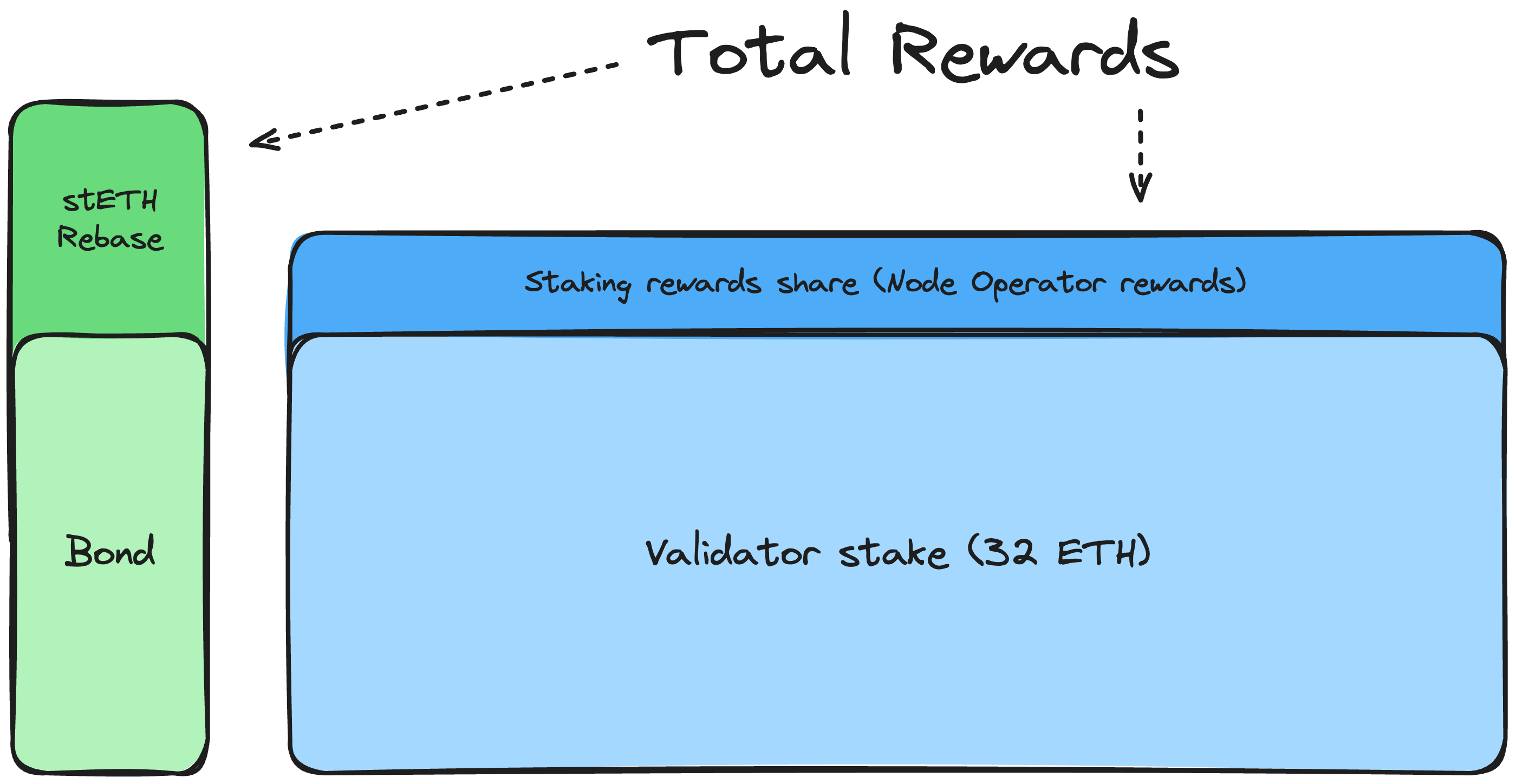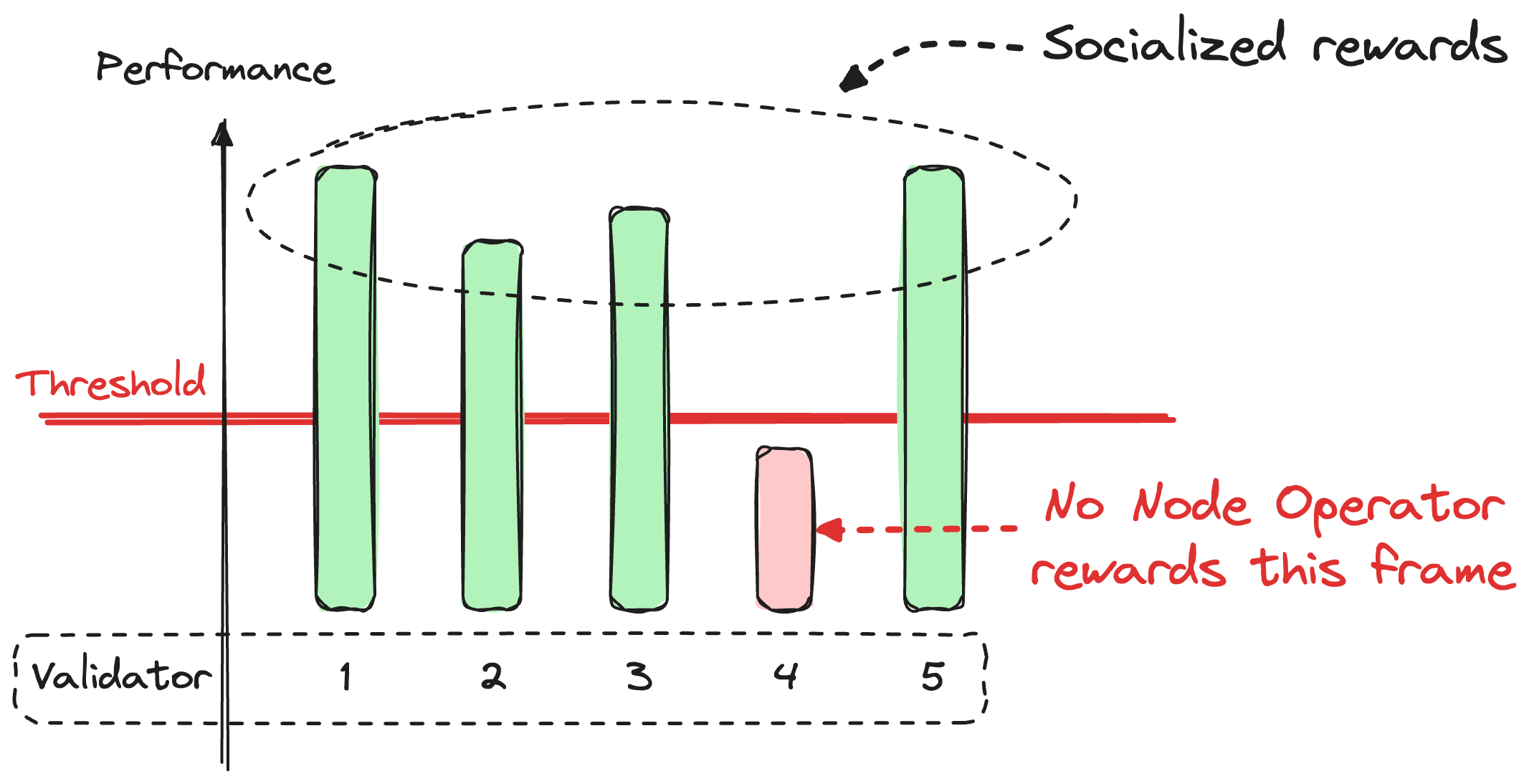Rewards

There are two types of rewards for CSM Node Operators:
- Node Operator rewards
- Bond rewards
Node Operator rewards
Node Operator rewards come from the LoE protocol's share of the Consensus and Execution layers' rewards. These rewards are calculated as a percentage of the rewards of a full 32 ETH validator. Node Operator rewards are distributed between all staking modules in the same way (proportionally based on the number of active validators per module, where active == deposited - exited). Each Accounting Oracle report allocates a new portion of staking rewards to CSM. Allocated rewards are stored on the module. Then, the allocation of the Node Operator rewards for CSM Node Operators using a Merkle tree is provided by CSM Performance Oracle once per frame, making a new portion of the rewards available for claim.
Bond rewards
Bond rewards (rebase) part of the rewards come from stETH being a rebasing token and the bond being stored in stETH. After each Accounting Oracle report, shareRate changes (most likely increases). Hence, the same amount of stETH shares will now be equal to a bigger stETH token balance.
Total rewards

The overall equation for the total rewards is as follows: totalRewards = validatorEffectiveBalance * networkAPR * moduleFee + bondAmount * shareRateChange. The supplementary post provides more details.
A meaningful part of total rewards comes from bond rebase. The bond and the Node Operator rewards are combined before the claim. The final amount of rewards available for claiming is calculated as totalBond + nodeOperatorRewards - bondRequired. This approach also ensures that any missing bond will be recouped by the protocol prior to a rewards claim.

Also, any excess bond will be treated as a reward.

Performance Oracle
The Performance Oracle creates a Merkle tree with the allocation of the Node Operator rewards and delivers the root on-chain. To make the original tree available to users, it is published on IPFS and GitHub. Instead of storing multiple roots, each new tree consists of all Node Operator rewards ever acquired by CSM Node Operators. Hence, only the latest tree is required to determine the reward allocation at any moment of time. The amount of rewards available for claiming can be calculated as totalAcquiredRewards - claimedRewards. claimedRewards are stored for each Node Operator in the CSAccounting contract to ensure correct accounting.
The Performance Oracle calculates validators performance based on their attestation, block proposal, and sync committee participation effectiveness. The exact formulas for performance calculation can be found here.
A performance threshold is utilized to determine the allocation of the actual Node Operator rewards. Validators with performance above the threshold are included in the allocation pool, while the rest are not. Activation and exit events are accounted for during the Node Operator's share calculation. Once the allocation pool is formed, each validator gets a staking rewards part of totalStakingRewardsAccumulated proportional to its lifetime within a frame. This effectively means that all rewards acquired by the module will be allocated among well-performers. Then, validator shares are allocated to the corresponding Node Operators, and each Operator can claim rewards for all of their validators in one go.

The frame for the Performance Oracle report is set to 28 days. This makes the frame long enough to account for short performance outages (with a smaller frame, this effect will be lower, and the performance threshold will be less useful). Making the frame bigger than 28 days will result in an unnecessary delay in reward allocation.
The performance threshold is relative to the overall network attestation effectiveness to ensure that network issues outside the Node Operator's control do not affect reward allocation.
Artifacts
Performance Oracle creates a few artifacts for each successful round of reward distribution: a dump of a Merkle Tree with Node Operators' cumulative rewards and a log of per-operator performance assessment data.
Both files are uploaded to IPFS, and their corresponding CIDs (essentially hashes of the files used to retrieve the content back from the IPFS network) are pushed on-chain. The CSFeeDistributor contract has two view functions to retrieve these CIDs: treeCid and logCid.
The Merkle tree dump can be used to construct a valid proof for Node Operators to claim their acquired rewards. For pre-generated proofs, see the csm-rewards GitHub repository. This repository also provides detailed instructions on how to generate proof and claim rewards manually via Etherscan.
A frame performance assessment log aims to achieve more transparency on the rewards distribution made by Oracle. It's another JSON object that stores, among other things:
- The performance threshold for a given frame;
- The total amount of shares distributable in the frame;
- Attestation rates of validators as "assigned" and "included" pairs;
- The amount of shares distributed to every operator in the frame.
There's also additional data in the log; for a full definition, look at the following typescript gist.
One can inspect the file to ensure all the operators' distributed amounts are correct; for example, by using this python gist. Interested persons can also check the attestations summaries for each validator in the log and report any discrepancies using the official Lido Discord.
If you want to learn more about the actual Performance Oracle algorithm, check out this detailed doc.
Bad performance
If a Node Operator's performance is below the threshold, they will not receive any rewards for that frame. However, the Node Operator can still claim their bond rewards (rebase) as usual. This means that even if a Node Operator's validators are not performing well, they can still benefit from the bond rebase. One can find an example of the rewards calculation here. Note that even when performing below the threshold, the rewards per validator will be higher than those for vanilla solo staking.
However, consistent bad performance can lead to forced ejection and the application of penalties. Please refer to the Penalties section for more details on this process.